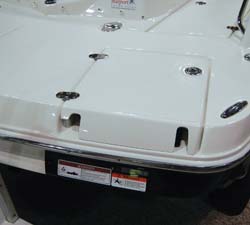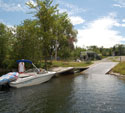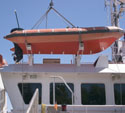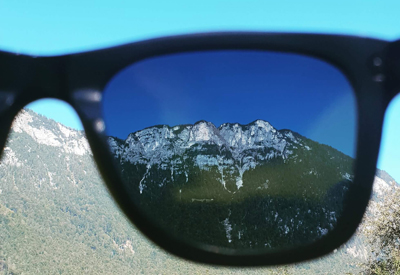Your Turn on the Wheel
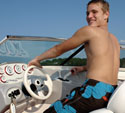
 No lines, no intersections, no stoplights, no gridlock. The water – the place to get away from it all. There is enough of it in Canada that it really is hard to find a congested waterway. Sure, they exist and if you chose to go where everyone else thinks is the place to go on that day, then you’ll find it. But there are so many choices of destinations and so many ways to get there that if you plan well, you can surely feel like you are alone in the middle of nowhere and let your troubles, your worries and your responsibilities slip away. Hold on – not all of your responsibilities. As captain of the vessel, you are legally responsible for the operation of the craft and the safety of the crew and passengers on board.
No lines, no intersections, no stoplights, no gridlock. The water – the place to get away from it all. There is enough of it in Canada that it really is hard to find a congested waterway. Sure, they exist and if you chose to go where everyone else thinks is the place to go on that day, then you’ll find it. But there are so many choices of destinations and so many ways to get there that if you plan well, you can surely feel like you are alone in the middle of nowhere and let your troubles, your worries and your responsibilities slip away. Hold on – not all of your responsibilities. As captain of the vessel, you are legally responsible for the operation of the craft and the safety of the crew and passengers on board.
Don’t stop reading! You may think that the legality of this scenario is reserved for larger vessels – the tour boat, cruise ship, ferry and water taxi. No. It’s for you too. From personal water craft (PWC) to day sailer to express powerboat, to a cabin cruiser and it’s tiny tender. While underway it’s all the same – when you are on the wheel, the regulations require you to keep a lookout or have someone else attend to that duty (and to be in communication with them); to maintain your course; be aware of the vessels around you; provide safety gear and a safety briefing to your passengers and crew; to ensure everyone is looked after in the event of an emergency; and, that your vessel is sound and has all required safety gear; this is just the start.
It is one of the furthest things from our minds as we leave the dock for a day or a weekend on a beautiful summer’s day. But surprises on the water are not a welcome event and the most important thing to remember whenever on the briny ocean tossed, whether you are the owner, at the helm or a crew member – we all have a responsibility to keep our eyes open, ears alert and to speak up if we are not comfortable with something we have noticed.
I’ve been in many types of vessel and in many waters and have found myself in some pretty interesting situations. Snaggin’ a line of lobster pots on the rudder of a 40′ sailboat in the dark is not fun; loosing a friend over the side of a fast small boat in a turn is scary (not to mention stupid); hearing a panicked Mayday over the VHF from a boat with whom you are cruising wakes you up pretty quick; and leaving port in sunny skies and then facing unforecasted 40′ seas and 50 knot winds is somewhat exhilarating. In some of these cases I was in command, others as a crew members and still others just along for the ride. But experience has proven to me that when someone, anyone, has a concern – listen, think and investigate. It may be something seemingly inconsequential but one thing can (and often does) lead to another.
A while ago now I worked on a tall ship and sailed the eastern seaboard, Caribbean and even the Pacific coast of North America. With a crew of 18, 3 watches and days out to sea in all weather you sure learned to work together. One cold and blustery night one crew member handed the wheel over to another and the course was called out and repeated – 330˚(or in a certain vernacular, “tree, tree, nutt’in, b’ye” ). About 30 minutes later the mate stuck his head out of the chart room with an inquisitive look on his face and asked the fella on the wheel, “what the heck are ya steerin’?”. He hollered back, “320˚of course”…and hell was to be paid! Good thing we were offshore. It may have been simple mishearing, a swing of the compass and a correction of the wheel to what looked like what was being steered – but 10˚off. That was one good mate with a constant eye on the chart and compass.
Working the pilot boat as the deckhand in an east coast harbour can be boring or busy. Some nights you sleep away your shift while others you don’t have a moment’s rest due to the traffic coming and going. While finishing up the shift, the captain recounted to me that once the pilot boat plowed right into a seawall in the port as both the deckhand and master nodded off – and woke up with jolt!
Now the sun was rising to show a clear day and only an hour to go in the shift as we powered easterly across the harbour to reclaim a pilot from a vessel now secure alongside. With the glare of the new day sun in our eyes, the drone of the engines, the rolling of the vessel and me standing behind the captain who was at the wheel, my eyes were mighty heavy. As the lids closed, I figured I could take a few moments of shut eye – after all, he was in charge. Whether it was a blast on a ship’s horn, a broadcast over the VHF or just a sixth sense, several minutes later we both awoke with a start and found ourselves still powering along not quite where we should have been and not sure how we got there – certainly a lack of crew cooperation and communication.
Even on those sunny days with no traffic around with the bay to yourself, you can’t let your guard down. As I came back on shift to the Inshore Rescue Boat/Search and Rescue unit I worked in the summers as a student, I saw a totem pole of sorts erected outside of our station. It was a good 14 ft. long log with a couple of spikes sticking out of it – obviously it had come loose from somebody’s crib work wharf. Upon closer examination, I noticed there were several notches cut into it at equal intervals and affixed to the last spike at the top was one destroyed prop. Turned out to be one of ours from our starboard engine – but there were a lot more notches on that log than from just one prop hit. This dead head had been making itself known around the bay and had a heck of a reputation – but still people seemed to find it. Keeping a lookout in all weather is essential.
GPS is the way we seem to navigate these days but the compass doesn’t need batteries or satellites flying overhead. It’s important to be familiar with yours and to be familiar with the local idiosyncrasies that may prevail. It is also important to trust your instruments especially when the “turning disease” finds its way into your head. Travelling to and from our home marina meant we sure got used to landmarks, lights and compass bearings as we rounded one island and set course to pass the next. Sometimes there were no landmarks due to darkness or restricted visibility so a quick check of the compass would set me on my course as I peered into the black and misty night. I held her steady, my senses telling me I was going straight and then I glanced down at the compass. Impossible! I was 15˚ off to the east. I corrected and set myself to hold the course. A quick look at the card and there I was, veering off to the east again! From then, I asked my crew to be the lookout and I kept my eye on the compass – and swore that the vessel was turning to the west but the compass showed a steady course. Instruments are an important source of information – use them.
Sometimes it’s not the primary machinery, gear or instruments that decide to go snakey on you. Back on that tall ship, after pounding through heavy seas for a few days we made port and began to clean up the mess above and below decks that comes after battling that type of weather. Later in the evening I went to use the head and one of the fellas said, “don’t use that one, it won’t flush, there’s no water coming to it.” Well, being part of the engine room crew I knew if there was no water at the head there might be water somewhere else. So we hauled up some deck boards up in the foc’sle to check the throughhull fittings and practically had a saltwater shower – the fitting and piping was blown apart. Fellas there dealt with stemming the flow while I took a quick trot back aft to the engine room to see how much water was in the bilge – the deck boards there were practically afloat! Flipping switches and turning valves set the pumps a pumpin’ and a few hours later we had dry and clean bilges! If something seemingly unimportant is amiss, ignoring it will not fix the problem and might in fact lead to something worse.
The key to a great time on the water is to always be aware of what is going on around you – onboard your boat and in the waters around it. It’s your responsibility to operate in a professional manner and ensure the safety of your crew and passengers. Share information, use your instruments, welcome input from everyone and assign duties to make even the newest member of your crew feel they have a responsibility to keep an eye out and to speak up. The sea can throw things at you that you don’t always expect. The more the crew works together when on the water, the better you will be able to identify, avoid and deal with the surprises, whether you are on the wheel – or not!



